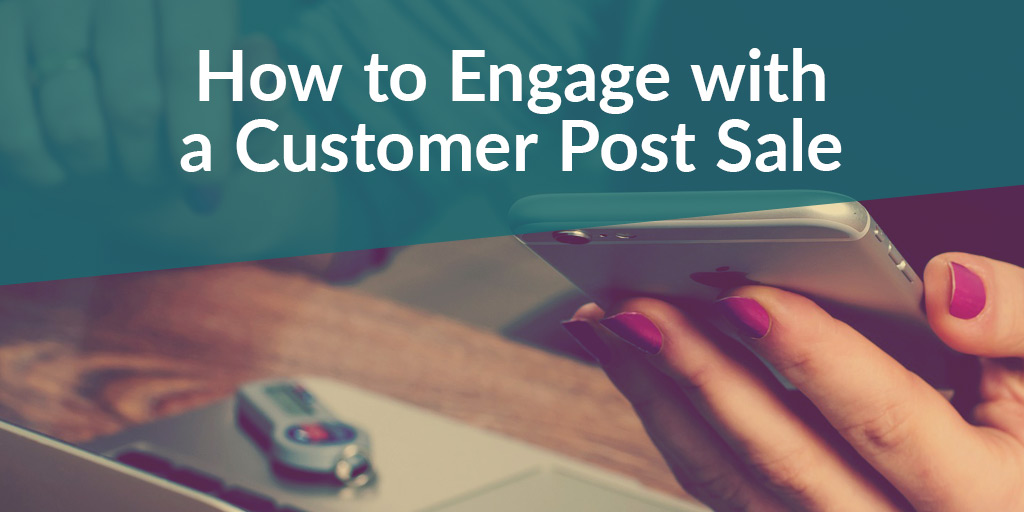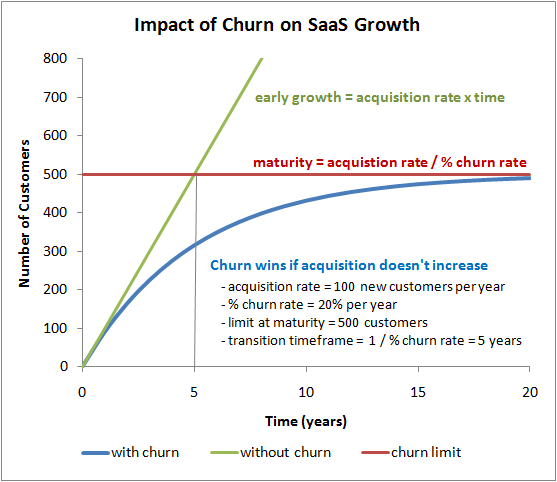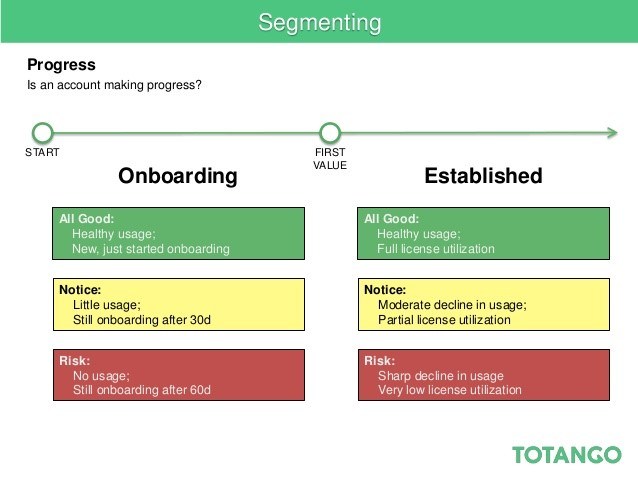How to Engage with a Customer Post Sale

Startups and expanding software companies tend to make the same mistake: They spend too much time and energy focusing on customer acquisition. They obsess over new sign ups, calling this “growth.” According to Econsultancy, companies are “significantly more likely to be focused on acquisition than retention.”
On the surface, that seems reasonable. More customers equals more revenue, right? But startups aren’t like other businesses who sell one-off products.
Like I’ve said before, retention is the most important growth-related metric. In order to grow a software service, you have to pay attention to your current customers. It costs a company 6-7 times more to acquire a customer than retain an existing one. It’s also far easier to sell more products (in our case, renewals and expansions) to current customers.
By increasing retention by just 5%, you can nearly double your profits. Too much churn, however, and growth can be stagnated for years.

Source: Chaotic Flow
Engaging with your customers after the sale is important because they want to feel like more than just numbers in a database. People tend to do business with companies that pay attention to their problems and needs. They want to be partners, not customers.
Even if you have the most powerful and useful product ever created, your customers will still have problems. Your product can’t solve them all. Nor are their problems static. They change and evolve over time, coming and going. There are always ways to provide more value, but it requires engaging with the customer.
What does post-sale engagement look like?
At its core, post-sale engagement looks similar to your customer acquisition process. If you don’t have a clear customer acquisition process, Startup Marketing has a helpful guide.
The fundamentals are the same. First, you assess their problems and then you deliver solutions. Pre-sale, your product is the solution. Post-sale, however, solutions can vary widely.
Naturally, customer segmentation and relevancy are important. Your customers use your product differently and at different rates. You can’t deliver the same messaging to everyone. You wouldn’t, for instance, want to send a sales-y upsell letter to someone who just upgraded.
Relevancy helps customers optimize their experience (and thus their investment). If you have a lot of interaction with your customers (as many enterprise companies do), relevancy is easy because you know your customer well. Your frequent interactions will give you all the information you need about their specific circumstance.
If you have a volume of low-touch customers, relevancy is more difficult. You can’t blast an email to your entire user base that’s customized enough to be valuable without mis-targeting some people. Fortunately, you can still use automation to engage customers at scale (just like you may have during your acquisition process).
Here are some types of automated emails that help you engage with your customers:
- Welcome email – This one is pretty standard. Welcome the customer when they sign up.
- Getting started email – Show them how to get their account in order for use.
- Milestone email – Congratulate them when they achieve something, such as when they integrate their social media account, import a set of data, or input payment information.
- How-to emails – Explain how to use a feature of your application or how to get the best results from it.
- Personal email – You can automate these, but make them look like they were done by hand. Use them to head-off problems or solicit feedback.
- Transactional emails – These report on functions of your app to make the customer aware that things are happening when they aren’t around. You might notify a customer when their shopping cart makes a sale, when an upload finishes, or when a teammate leaves a message. (The nature of these will depend on your product, of course.)
Strong post-sale engagement stems from a proper understanding of your customer. Unfortunately, this isn’t information you’ll have right away. It takes a Customer Success team a while to collect a comprehensive book of intelligence on customer groups. You’ll get this right over time.
Avoid the post-sale gap
Just because you’ve sold to a customer, doesn’t mean your work is over. Sure, you may make setup documentation available, but a customer who feels abandoned and lost is highly likely to churn.
Instead of letting the customer figure things on his/her own, there should be a deliberate hand-off from sales to customer success. This transition should be part of your process so someone is accountable.
In some cases, the transition is an internal matter. A new customer is moved into an automated onboarding pipeline that’s overseen by customer success. In high-touch cases, a sales manager makes a phone introduction to a customer success manager.
The goal is to quickly drive the customer to whatever point you consider them onboard. Usually this is the first point where the customer achieves some value from the product.

Source: Totango
Provide useful information
People love free information, especially when it makes their life and work easier. Engage your customers with regular content that meets their needs.
Product advice
Naturally, your customers want to get the most out of the product they are paying for. Speak with them occasionally about using your product well. You might send content that explains a feature in depth, walks them through a UI or shows them how to integrate other tools.
Pair these tips with the customer’s use of the product. For example, it’s smart to remind the customer about a particular feature, but only if the customer has never used it before. If you send an email to a customer that says “Hey, try this awesome feature,” you’ll come off like a robot if it’s a feature the customer uses every day.
News, best practices and tips
Provide helpful information surrounding the product’s industry or theme that doesn’t necessarily relate to the product. For example, if you sell a healthcare tool, your customers would love it if you updated them about regulatory changes or new healthcare practices. Not only does this help your customer, but it positions you as an expert on the subject.
Avoid communication overload
Just because you can reach your customers via email, Facebook, Twitter, phone and text messaging doesn’t mean you should. You are not the only thing in their lives. Don’t try to fill every communication channel you can. Figure out how they prefer to be contacted and communicate that way.
Most importantly, only communicate when you have something to say. “Just saying ‘hi’” emails are lame. Only contact the customer when you have something of value to deliver or something to request.
Show interest and enthusiasm
Anyone who interacts with one of your customers needs to be truly engaged. They need to care about the customer’s goals and problems, and want to genuinely help. They need to be built to serve.
Take an interest in customers by asking lots of questions. What problems do they still have? How could you serve them better? How could the product be made better? (Don’t shy away from negative feedback here!)
Conversations should be two-way. Don’t overwhelm your customers by bombarding them with content, achievements, congratulations and phone calls. Be assertive, but not aggressive. Give them opportunities to respond. Actually listen to those responses, even if you have to put someone in charge of monitoring an inbox.
Distant employees spread their detachment like a disease to customers. The customer needs to know that you aren’t just a bank withdrawal every month, but a resource worthy of their investment. Take the time to express genuine gratitude. This is another place you need to use people who are built to serve.
GreenPal (Uber for lawn care) fights churn with a “thank you” card campaign. After a customer uses the service three times, they receive a handwritten card thanking them for their business. Does this come with a significant labor cost? You bet, but it also reduced churn measurably.
Never count yourself out
If you have lost touch with a group (or all) of your customers, don’t be afraid to reach out and establish a new connection. Your customers will be all over the place in terms of their problems and use of your product, so make sure to segment carefully and tailor your messaging. Once you’ve wrangled them up, you can focus on maintaining the long relationship.
If you need help engaging with your customers after you’ve made the sale, contact us.
